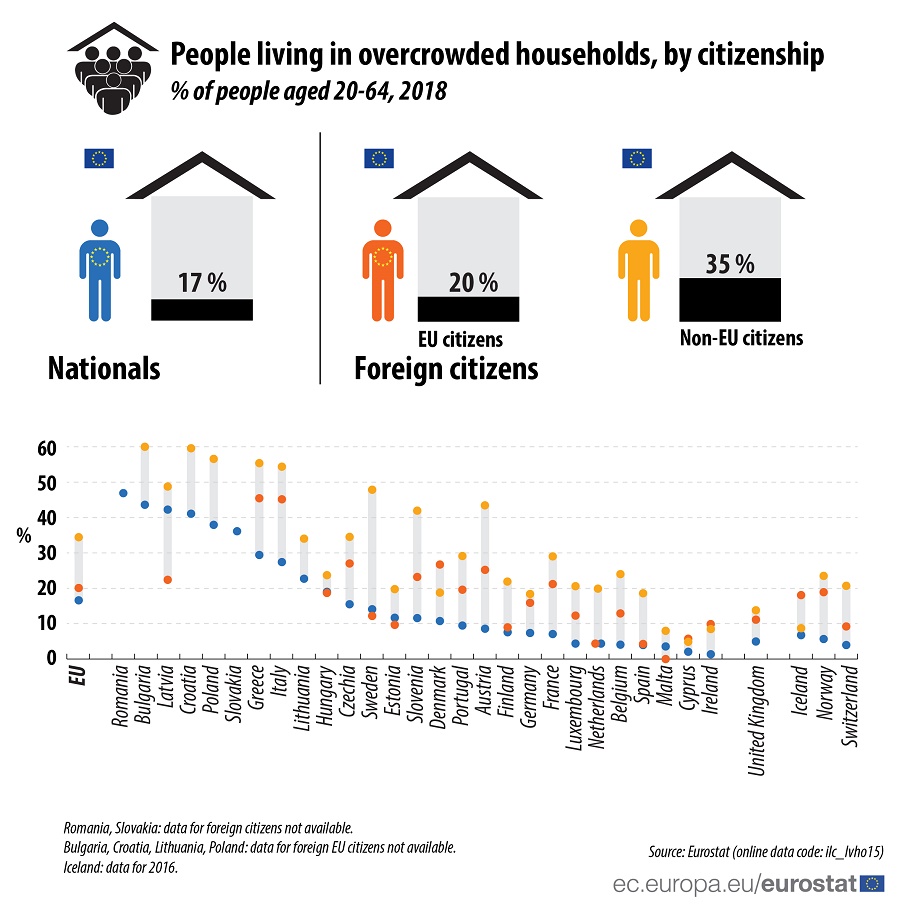
In the European Union (EU), 35% of non-EU citizens were living in overcrowded households in 2018, meaning they did not have the number of rooms appropriate to the size of the household. By contrast, this rate was 17% for nationals and 20% for foreign EU citizens (i.e. EU citizens residing in another EU country).
Source dataset: ilc_lvho15
Among EU Member States, the overcrowding rate recorded for non-EU citizens was the highest in Bulgaria (60%), Croatia (59%), Poland (56 %), Greece (55%) and Italy (54%). The lowest rates were observed in Malta (8%) and Cyprus (5%).
For foreign EU citizens, the overcrowding rate was highest in Greece and Italy (both 45%). In Malta there was not a significant number of foreign EU citizens living in overcrowded households in 2018.
The highest overcrowding rates for nationals were recorded in Romania (47%), Bulgaria (44%), Latvia (42%) and Croatia (41%), while the lowest were in Cyprus (2%) and Ireland (1%).
Further information is provided in the Statistics Explained article Migrant integration statistics - housing.
Notes:
- The overcrowding rate is defined on the basis of the number of rooms available to a household, the household’s size, family situation and the ages of its members.
- The European Union (EU) includes 27 EU Member States. The United Kingdom left the European Union on 31 January 2020. Further information is published here.
To contact us, please visit our User Support page.
For press queries, please contact our Media Support.


